Different Barcode Types - Complete Guide
We explain everything you need to know about the different barcode types we use at EXELPrint. Some barcodes are used more than others, but generally these include traditional 2D Barcodes, QR Codes and the latest 3D Code technology. We’ll give you examples of each type and show you how to identify and scan the codes.
| Barcode type | What it's used for | Characters | How to identify | Dimensions |
| Code 128 | When amount of space is limited | ASCII 128 Character Set | Upper/lower case letters & numbers at variable lengths | 1D |
| Retail warehouse & distribution | Alpha numeric | Uppercase letters and numbers only | 1D | |
| Interleaved 2 of 5 | Shipping & warehouse | Numeric only | Linear 1D barcode, numbers only | 1D |
| Retail point of sale | Numeric only | 12 digits underneath black/white bars | 1D | |
| QR Codes | Interactive media | N/A | Square shaped 2D barcode | 2D |
| Smart packaging labels | N/A | Circular shape with lines and dots around it | 2D |
Code 128
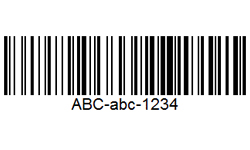
What is it used for?
Perfect for asset tracking, inventory control, warehouse and distribution. Put simply, these are commonly used wherever there is a large amount of data and/or the amount of space available is limited. You'll often find these barcodes used by supply chain and shipping operators.
How does it work?
Code 128 barcodes are high-density compact codes that are read by a linear barcode scanner. They originate from the ASCII 128 Character Set (which includes a-z, A-Z, 0-9 and special characters) and therefore contain both alphabetic and numeric characters, meaning they can be used in many different applications. Essentially, it contains a start character, data digits, a modulo 103 check digit and a stop character. Code 128 barcodes are one of the most popular choices, especially if space is an issue as their length can be varied and flexible.
How to identify Code 128 Barcodes?
These are linear 1D barcodes that include all the ASCII characters – so this could be any combination of uppercase and/or lowercase letters and numbers at variable lengths. But generally with a Code 128 barcodes, each character starts with a bar and ends in a space.
Code 39
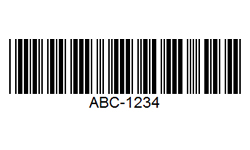
What is it used for?
Retail warehouse and distribution, cargo handling and batch numbering. You'll also commonly see it being used in the automotive industry. If the amount of space needed is limited because the goods are small, then Code 128 could be a better choice as Code 39 is less compact and requires more room.
How does it work?
Code 39, otherwise known as code 3 of 9 or type 39, are one of the earliest and most commonly used barcodes. When they first originated, these codes were only able to encode 39 characters, hence the name, but this has since been updated and can now include 43. It is similar to a Code 128 barcode in that they can be created at variable lengths, but they are not quite as compact. If you are after a simple barcode solution and have plenty of space, Code 39 is an ideal choice. This is especially true as it can be read by almost any barcode reader.
How to identify Code 39 Barcodes?
These barcodes are very similar to Code 128, with the exception being they only use uppercase letters and numbers. But either way they are alphanumeric with the ability to use the 128 ASCII character set.
Interleaved 2 of 5
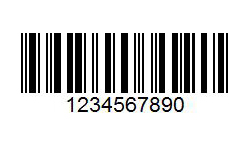
What is it used for?
Automotive assembly, medical devices and fixed asset tracking. You'll commonly find it being used in packaging materials for shipping and warehouse industries.
How does it work?
Interleaved 2 of 5, or ITF are a numeric-only barcode used to encode pairs of numbers. A unique feature of these barcodes is that data is stored in both the bars and the spaces in between bars. This makes them a popular choice where space is a concern, but this code does require an even number of characters. They are also a good choice for printing on rough surfaces or materials, like corrugated cardboard as they have a high print tolerance.
How to identify Interleaved 2 of 5 Barcodes?
Look for a linear 1D barcode that is made up of numbers only. They can be created at variable lengths but will always have an even number of digits. If the number of digits is short by one number, a 0 is placed at the end to ensure it stays even.
Universal Product Code (UPC)
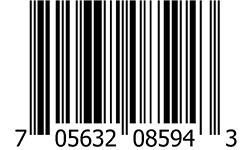
What is it used for?
Predomintally used in retail for point of sale and logistics or warehouses. Its main purpose is for speed in identifying product features when scanned, essentially eliminating the need to enter anything manually. You can also track inventory a lot more accurately so you can plan for when product stock is low or needed.
How does it work?
UPC barcodes are tailored made to pick up product attributes such as flavour, brand, size, colour etc. when scanned through checkout. It consists of two parts: a barcode and the plain printed numbers below it. Each number corresponds to the black and white bars above it. Basically, the first 6 numbers of the UPC is your manufacturer identification number, while the next 5 digits refers to the actual product being sold. Someone within the company controls these specific numbers to ensure the same number isn't used multiple times. Lastly, the final digit is called the check digit, which is there to help ensure the correct number has been scanned. Because there are variations of the same product with regards to an attribute (i.e. colour), each product will have its own unique 5 digits. For example, a size 8 pair of green shoes will have different identifying numbers to a size 8 pair of red shoes.
How to identify UPC barcodes?
This machine readable barcode contains 12 digits that sit under the alternating black and white bars.
QR Code
.jpg)
What is it used for?
Ideal for directing people to some kind of interactive media, like a video or website. This could be for a marketing initiative or advertisements i.e. a special promotion, filling out a survey, information on a product etc. But they can certainly also be used for inventory and asset management. What we're seeing at the moment are QR codes being used for a huge range of different uses and how often we're being asked to create QR code labels has accelerated in the last two years.
How does it work?
A QR Code, which is short for Quick Response Code, is a two-dimensional, or 2D, version of a barcode. This means they can store information both horizontally and vertically, as opposed to the other barcode types listed which only store information horizontally, making them one-dimensional. Essentially this means QR Codes are able to store a larger volume of more complex data than a barcode. We explain this in more detail in our QR codes vs barcodes blog. They can be altered to almost any size and can be read extremely fast. Nowadays of course, smartphones can scan them by using the phones camera which offers great versatility.
How to identify QR Codes?
Look for a square shaped 2D barcode that is made up of a pattern of black and white dots and squares. They can come in all shapes, colours and sizes, and often include some kind of numbering system.
WeChat Mini Program Codes
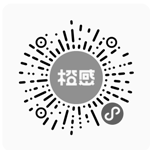
What is it used for?
These codes are specially designed to be used with Chinese social media platform WeChat. They feature a unique circular code design. They can be linked to all different function within WeChat e.g. users scan these codes to then open a WeChat Mini Program. We have also used these codes to create Smart Packaging Labels.
How does it work?
Essentially these codes work on a similar level to QR Codes. They are a 3-dimensional code that can be scanned by a smartphone camera. They store large volumes of complex information and data similar to a QR Code, but they are created and read in a circular form rather than horizontally and vertically.
How to identify QR Codes?
These codes can be easily identified by their circular shape. Look for the circle with a pattern of lines and dots surrounding it. These codes can also be customised to include logos or brand colours, but the general shape usually stays the same.
Create your own:
It can be difficult to know which type of barcode will work best for your needs, there are many different options to suit a whole range of industries and products.
These barcodes are a simplified example of what the codes can look like. Our specialty is creating unique barcode labels in all different shapes, sizes and colours, so if there’s something specific you’re after, rest assured we can create a unique solution just for you.
If you would like any further information, or if you’re ready to start creating your own Barcode Labels, please don’t hesitate to get in touch with us on 1300 393 577 or request a Quick Quote.
